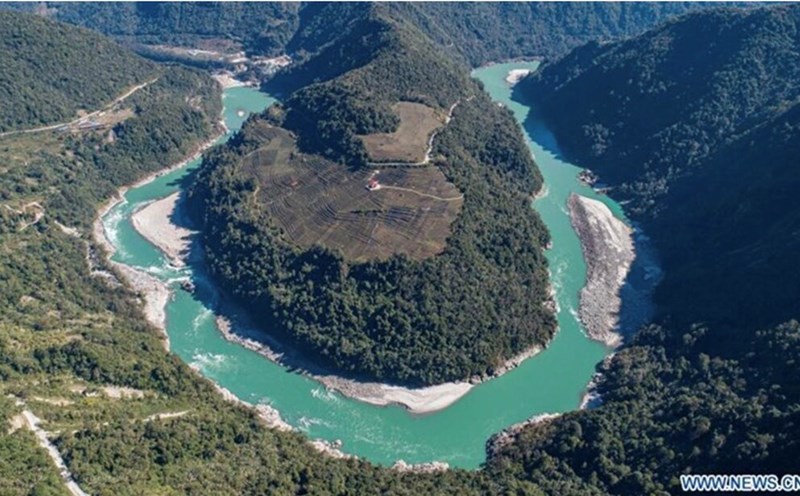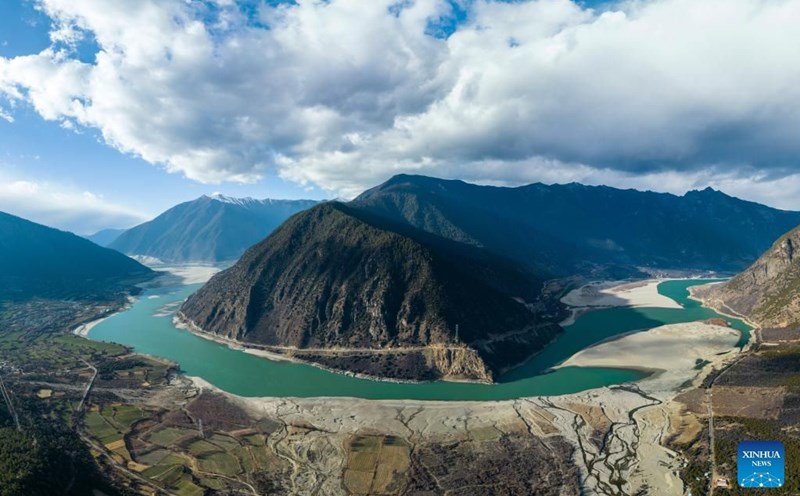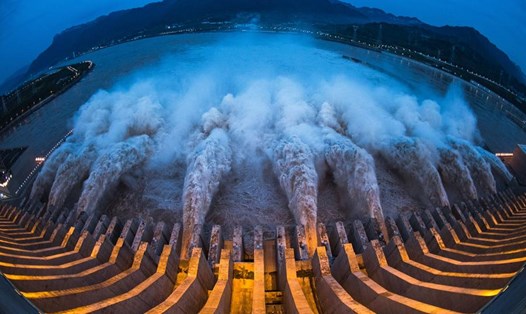When it comes to China's energy ambitions, the image of the Three Gorges Dam, the world's largest hydroelectric project, is always mentioned first. But further upstream of the Kim Sa River, there is a lesser-known wonder, but equally impressive, the Khe Lac Do Hydropower Plant.
With a height of nearly 286m and cutting itself between Sichuan and Yunnan provinces, the Khe Lac Do dam is not only an infrastructure project but also a statement about China's promotion of clean and sustainable energy.
Operated since 2013, Khe Lac Do owns "legendary" numbers. Reservoir capacity: 12.67 billion m3 (equivalent to 12,670 billion liters of water). Total installed capacity: 13,860 MW, second only to the Three Gorges Dam in China and Belo Monte in Brazil.

Annual electricity output: 57.12 billion kWh, enough to light up more than 30 million households in 1 year.
Equipped with 18 generators, each with a capacity of up to 770,000 kW, the Khe Lac Do hydropower plant is the heart of the Western to Eastern power transmission strategy - bringing clean energy from the mountainous areas of the West to coastal industrial centers such as Zhejiang and Guangdong via a high-voltage one-voltage (HVDC) transmission system of more than 2,900 km, transmitting about 14.4 GW of electricity to Chinas economic centers.
In addition to its role in electricity production, Khe Lac Do is also a strategic flood shield for major cities such as Nghi Tan, Trung Khanh and Lo Chau, with the ability to control up to 4.65 billion m3 of floodwater.
Thanks to that, the frequency of severe flooding in these places has been reduced from 20 years/time to 100 years/time - a leap forward in disaster management in the era of climate change.

Inside the dam, a floodgate weighing up to 1,600 tons, recorded as the heaviest in the world, can release floodwaters to form columns like firecrackers in the midst of majestic nature.
Although it is a source of pride in technology and energy strategy, the price is not cheap, nearly 10 billion USD. In addition, more than 180,000 people, mostly farmers in mountainous areas, have had to evacuate to make way for a 200 km long, 700 m wide reservoir that is flooded with more than 3,000 hectares of land.
The 2013 water accumulation caused the water level to rise 100m in just 51 days, causing serious ecological disruption in the downstream, especially in the Lo Chau area, where river water had once fallen to the bottom.
Not as famous as the Three Gorges Dam, the Mekong Delta is a key piece in China's sustainable energy development model, as the country wants to reduce its dependence on coal and move towards carbon neutrality by 2060.











